
-
Find the right food for your petTake this quiz to see which food may be the best for your furry friend.Find the right food for your petTake this quiz to see which food may be the best for your furry friend.Featured products
 Adult Small & Mini Lamb Meal & Brown Rice Recipe Dog Food
Adult Small & Mini Lamb Meal & Brown Rice Recipe Dog FoodFor the faster metabolism of Small & Mini dogs
Shop Now Puppy Lamb Meal & Brown Rice Recipe
Puppy Lamb Meal & Brown Rice RecipeVital nutrients to support 5 essential building blocks for lifelong health
Shop Now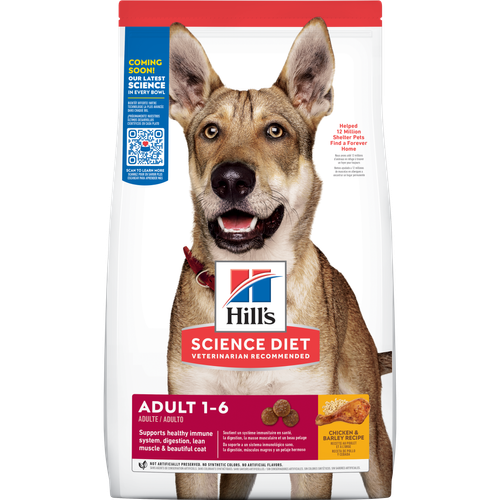 Adult Chicken & Barley Recipe Dog Food
Adult Chicken & Barley Recipe Dog FoodSupports lean muscle and beautiful coat for adult dogs
Shop NowFeatured products Hill's Science Diet Adult Sensitive Stomach & Skin Chicken Recipe Dog Food
Hill's Science Diet Adult Sensitive Stomach & Skin Chicken Recipe Dog FoodHighly digestible recipe, gentle on stomachs. Nourishes skin & promotes a lustrous coat
Shop Now Adult Indoor Chicken Recipe Cat Food
Adult Indoor Chicken Recipe Cat FoodSupports energy level and beautiful fur in indoor cats
Shop Now Adult Chicken & Barley Recipe Dog Food
Adult Chicken & Barley Recipe Dog FoodSupports lean muscle and beautiful coat for adult dogs
Shop Now -
Dog
- Dog Tips & Articles
-
Health Category
- Weight
- Food & Environmental Sensitivities
- Urinary
- Digestive
- Joint
- Kidney
-
Life Stage
- Puppy Nutrition
- Adult Nutrition
- Senior Nutrition
Cat- Cat Tips & Articles
-
Health Category
- Weight
- Skin & Food Sensitivities
- Urinary
- Digestive
- Kidney
-
Life Stage
- Kitten Nutrition
- Adult Nutrition
Featured articles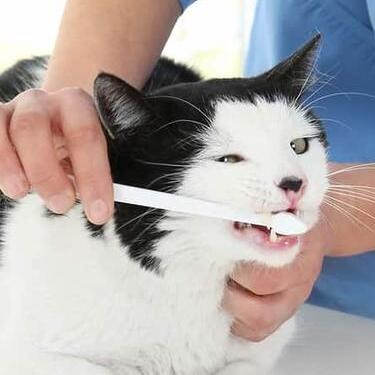 Pet Dental Health: What Happens During a Deep Teeth Cleaning?
Pet Dental Health: What Happens During a Deep Teeth Cleaning?Learn about veterinary dental care for your pet, including deep teeth cleaning procedures, which can help your dog or cat maintain proper dental health.
Read More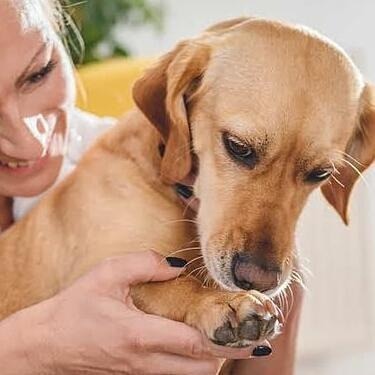 Virtual Vet Visits: What You Need to Know
Virtual Vet Visits: What You Need to KnowLearn the ins and outs of a televet appointment before you talk to a vet online.
Read More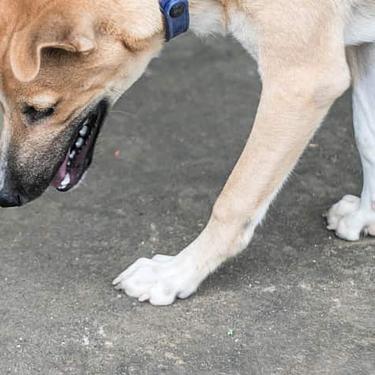 My Pet Ate a Lizard — What Should I Do?
My Pet Ate a Lizard — What Should I Do?Learn what to do if your pet eats a lizard, including whether they can be toxic and symptoms to keep an eye on when they've swallowed one.
Read More -


You know the scenario: your puppy is walking confidently next to you, head held high. You're so proud of how far he's come in his training in just a few short weeks. Your head is held high, too. After all, you have the perfect pooch.
Of course, that's when the leash goes taut, jerking you off balance. As you stumble back, you realize your perfect puppy has found some piece of unidentifiable food on the ground (at least you hope that's food!) that he's trying to lick up as fast as he can.
You wonder why he has to try and eat everything, but not before he's wolfed down a few bites of the sludgy mess.
So how can you prevent your dog from eating (usually gross) stuff off the ground on your walks? Read on for some ideas.
Why Does My Dog Try to Eat Everything?
Journey Dog Training owner Kayla Fratt says it's natural for dogs to want to taste or eat whatever they find — no matter how gross it might be. Dogs munch on poop and soggy garbage because it's in their DNA.
"Your puppy is acting on her most basic impulses to explore the world with her mouth, then eat everything she finds," she writes on her blog. "This isn't uncommon."
Fratt also notes that many puppies simply grow out of the stage where they want to try everything. But because eating weird things can be dangerous to your dog, causing an upset stomach or even requiring a trip to the veterinarian (and don't even mention that breath!), it's worth the effort to train your dog to steer away from things that shouldn't be in his mouth.
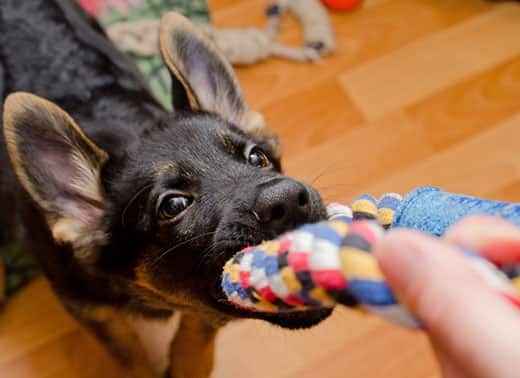
Teaching Your Pup to Focus on You
The first important step toward helping your pup stop eating everything in sight is to get him to master the command to "drop it" or "leave it." Sandy Otto, the owner of Puppy Preschool dog training, advises clients to practice this skill every day with a new puppy.
This training technique is easy to practice at home:
- Hold an object (like a toy) in one hand.
- Hold a treat behind your back with the other hand (you want to make sure the dog doesn't smell it).
- Let the dog chew on the toy you're holding, but don't release it.
- Put the treat up to his nose so he can smell it.
- When he lets go of his toy to get to the treat, give your command of choice and then give him the treat.
Practicing this consistently will teach your dog to let go of an object when you give your command.
Another way to help your puppy "drop it" is to distract him. Carrying treats on walks is important so that you can get your dog to pay attention to you immediately when you ask.


Tasty Tips
Dogged Decision Making
Just like young children, dogs can also practice impulse control. Fratt gives several ideas for "games" that actually teach a dog to "consult" with you before following his nose to that curious smell on the ground. She calls one game "It's Your Choice."
This game teaches your dog to pause and look to you for guidance when he wants something. It can teach him to make good decisions when he's being tempted:
- Put treats in your hand and hold your hand in a fist.
- Let your dog sniff, nibble or paw at your hand.
- Don't open your fist until your dog sits back to wait.
- Close your hand when he dives toward the treats. When he sits back again and waits a second or two, place one treat on the ground for him to gobble up.
- Gradually increase the time between opening your hand and delivering the treat to build his impulse control.
Staying Patient
While these methods can help reduce your dog's penchant to pick things up on walks, don't be surprised if these tips don't work all the time, Fratt says. Be patient, and don't be afraid to pause a difficult training session and try again tomorrow.
If you believe your dog's eating habits might be due to more than just curiosity, you should consult your vet. While unusual, your dog's tendency to eat everything in sight might come from a disorder called pica, which Wag! explains causes dogs to compulsively eat non-food items. A vet can help you determine if your dog suffers from pica. The American Society for the Prevention of Cruelty to Animals (ASPCA) also recommends keeping an eye out for other reasons that a puppy might chew on strange items, such as teething or stress.
By patiently working with your dog, playing teaching games and keeping your puppy focused on you (instead of on that fast food wrapper), you can help teach him that "going on a walk" doesn't mean "the buffet is open for business."


One of our staff authors prepared this article for you
Related products

Supports lean muscle and beautiful coat for adult dogs

For the faster metabolism of Small & Mini dogs

Vital nutrients to support 5 essential building blocks for lifelong health

Supports energy level and beautiful coat in mature dogs who prefer smaller kibble
Related articles
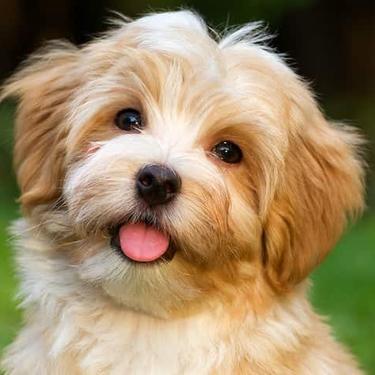
Discover how the field of dog science is giving us more and more insights into the inner workings of our furry best friends.
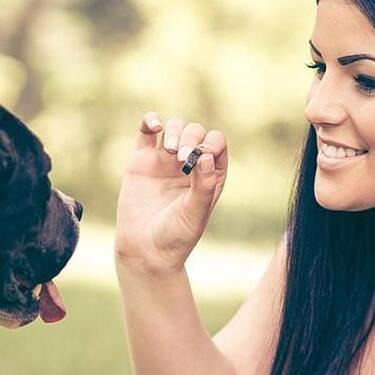
Proper nutrition for your pregnant or nursing dog is vital to her and her puppy's health. Learn what you should do provide her with the proper nutrients.
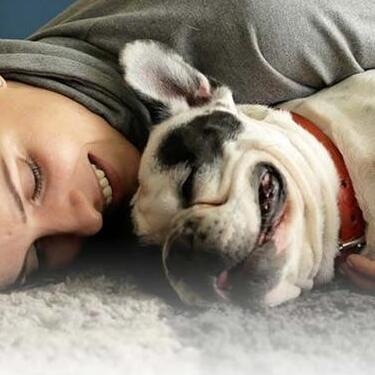
Your dog's coat and skin are a big part of your dog's overall health. Ensure you keep your dog's coat healthy, by following these simple tips.
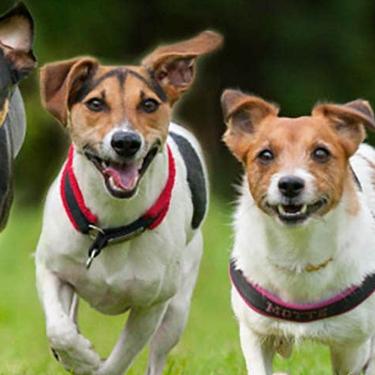
Learn about Hill's puppy food and the nutritional benefit & high quality ingredients that it contains for your pup.
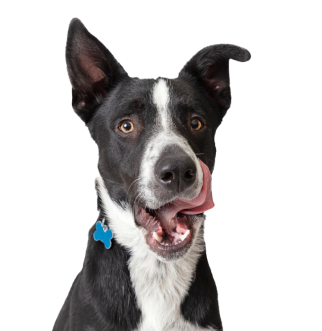
Put your dog on a diet without them knowing
Our low calorie formula helps you control your dog's weight. It's packed with high-quality protein for building lean muscles, and made with purposeful ingredients for a flavorful, nutritious meal. Clinically proven antioxidants, Vitamin C+E, help promote a healthy immune system.
Put your dog on a diet without them knowing
Our low calorie formula helps you control your dog's weight. It's packed with high-quality protein for building lean muscles, and made with purposeful ingredients for a flavorful, nutritious meal. Clinically proven antioxidants, Vitamin C+E, help promote a healthy immune system.

